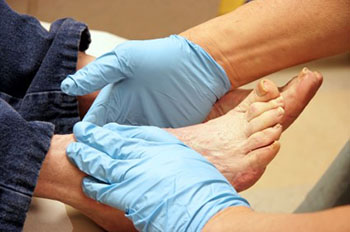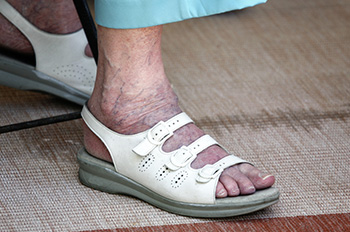
Unfortunately, foot problems are often a common result of having diabetes. As time goes by, it is likely that diabetes can cause nerve damage, also known as diabetic neuropathy. This can lead to tingling or a painful sensation, and it may also cause you to lose feeling in your feet. The loss of feeling in your feet can become incredibly dangerous, especially if you can longer sense a blister or cut on your foot; this can lead to sores or infections.
There are many ways to maintain healthy foot care when dealing with diabetes. Most importantly, you want to ensure that you are managing your blood glucose levels, otherwise known as your blood sugar. You also want to ensure that you are checking your feet daily. As mentioned before, it is important to recognise if your feet have cuts, sores, blisters, verrucae, ingrown toenails, or other troubling foot conditions to stay ahead of the issue and prevent yourself from further harm. Along with foot checks, you should also wash and dry your feet daily using lukewarm water. It may also be useful in certain cases to moisturise your feet daily, especially if you are prone to dryness. Please be advised, however, to avoid moisturising between the toes as they will not dry properly. Another rule you may want to follow is to ensure you are cutting your toenails straight across. You should also refrain from digging into the sides of the toes; this will help prevent the development of an ingrown toenail. If you do happen to develop a corn or callus, never treat them yourself; seek the help of a professional. It may also be beneficial to investigate socks made specifically for those with diabetes to help provide yourself with extra cushion. You may also want to refrain from walking barefoot, as well as avoid smoking, as it restricts the blood flow to your feet.

In certain serious cases, you may notice a cut, blister, or bruise is not healing after a few days. If this occurs, it is important to seek the help of a professional. Other warning signs include redness, swelling, a callus with dried blood inside of it, or an infection that causes discoloration of the foot and an odor.
Here at The Footcare Centre we carry out at least an annual diabetic check which looks in detail at:
- Vascular status (blood flow) which includes the use of dopplar ultrasound
- Neurological status (how your nerves are working)
- Biomechanical risk factors such as the range of motion in the joints of the foot
- Tissue viability- with the use of our pressure plate we can identify potential areas of concern and ulceration risk
You will then be categorised according to NICE guideline 19 and information will be provided. With your permission the results of your assessment will then be sent to your GP for their records.
If you would like more information on how to maintain healthy feet while living with diabetes, seek the assistance of a podiatrist who can provide you with the tips needed for healthy foot care. We are proudly serving the communities of Weybridge, Addlestone, Chertsey, Hersham, West Byfleet, Shepperton.
